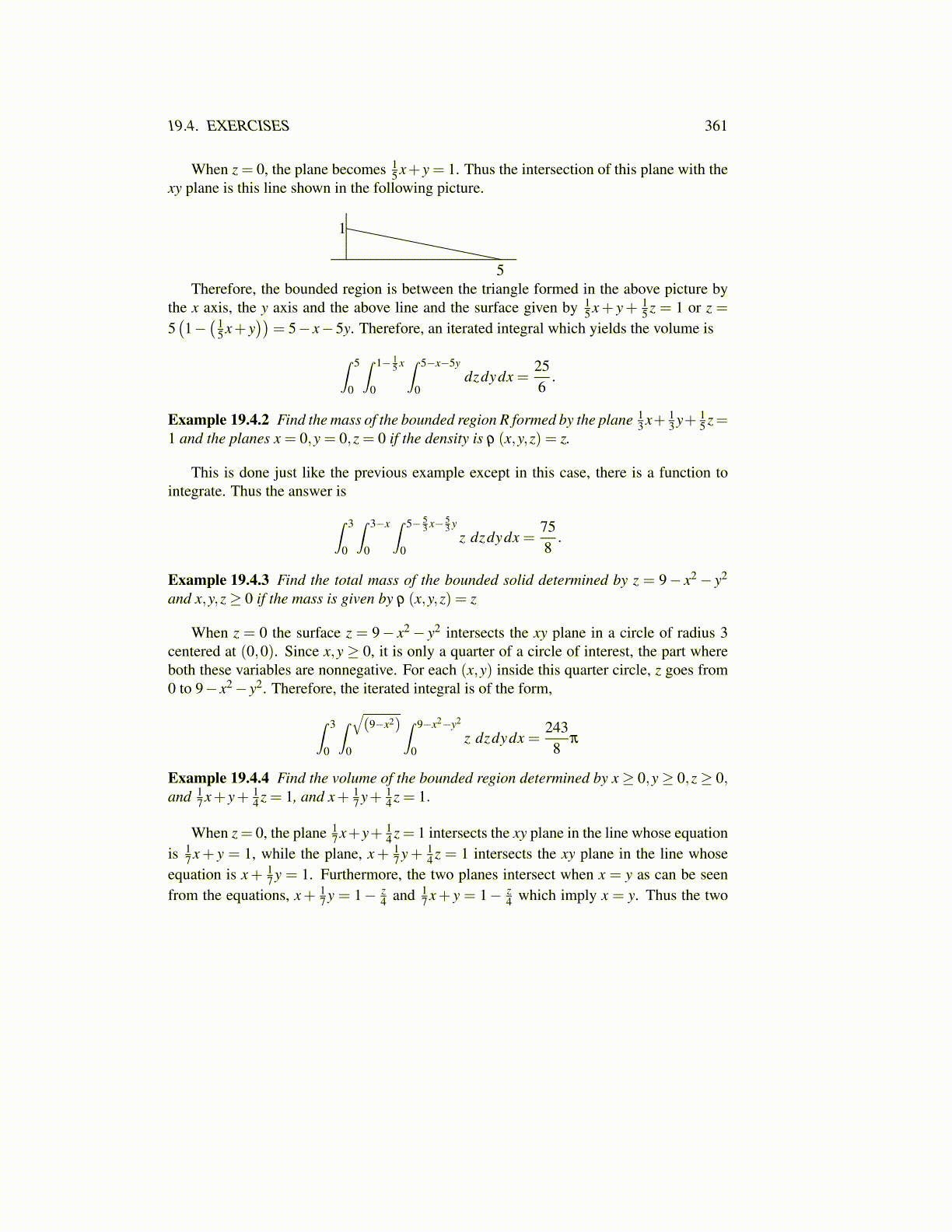
19.4. EXERCISES 361
When z = 0, the plane becomes 15 x+y = 1. Thus the intersection of this plane with the
xy plane is this line shown in the following picture.
1
5Therefore, the bounded region is between the triangle formed in the above picture by
the x axis, the y axis and the above line and the surface given by 15 x+ y+ 1
5 z = 1 or z =5(1−( 1
5 x+ y))
= 5− x−5y. Therefore, an iterated integral which yields the volume is
∫ 5
0
∫ 1− 15 x
0
∫ 5−x−5y
0dzdydx =
256.
Example 19.4.2 Find the mass of the bounded region R formed by the plane 13 x+ 1
3 y+ 15 z=
1 and the planes x = 0,y = 0,z = 0 if the density is ρ (x,y,z) = z.
This is done just like the previous example except in this case, there is a function tointegrate. Thus the answer is
∫ 3
0
∫ 3−x
0
∫ 5− 53 x− 5
3 y
0z dzdydx =
758.
Example 19.4.3 Find the total mass of the bounded solid determined by z = 9− x2− y2
and x,y,z≥ 0 if the mass is given by ρ (x,y,z) = z
When z = 0 the surface z = 9− x2− y2 intersects the xy plane in a circle of radius 3centered at (0,0). Since x,y ≥ 0, it is only a quarter of a circle of interest, the part whereboth these variables are nonnegative. For each (x,y) inside this quarter circle, z goes from0 to 9− x2− y2. Therefore, the iterated integral is of the form,
∫ 3
0
∫ √(9−x2)
0
∫ 9−x2−y2
0z dzdydx =
2438
π
Example 19.4.4 Find the volume of the bounded region determined by x≥ 0,y≥ 0,z≥ 0,and 1
7 x+ y+ 14 z = 1, and x+ 1
7 y+ 14 z = 1.
When z = 0, the plane 17 x+y+ 1
4 z = 1 intersects the xy plane in the line whose equationis 1
7 x+ y = 1, while the plane, x+ 17 y+ 1
4 z = 1 intersects the xy plane in the line whoseequation is x+ 1
7 y = 1. Furthermore, the two planes intersect when x = y as can be seenfrom the equations, x+ 1
7 y = 1− z4 and 1
7 x+ y = 1− z4 which imply x = y. Thus the two